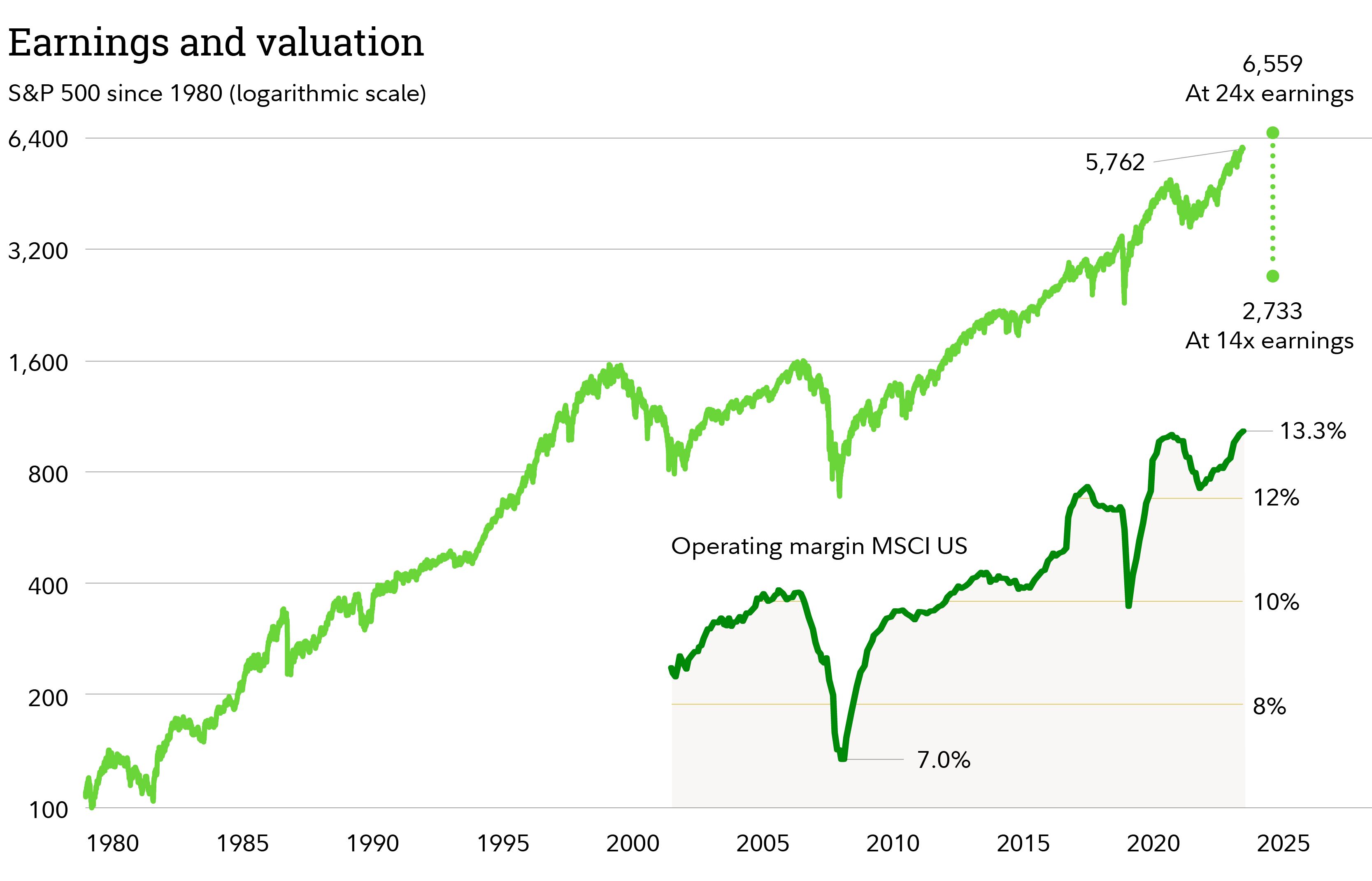Now that much of the election uncertainty is past, investors' initial response to Donald Trump’s victory—along with the GOP takeover of the Senate—appears to have been bullish for a broad range of asset prices. Global stock markets were higher after the election, along with oil, cryptocurrencies, and the dollar. This follows what has already been a strong 2024 for stocks, with the S&P 500 up 26% year to date and the tech-heavy Nasdaq up 31%.
How long might this bull market last?
The current bull market is now 25 months old. I think we are in the 7th or 8th inning, with time left to put more runs on the board still. So far, rising stock prices have been driven primarily by growing earnings. Yet there are reasons for caution.
The 2024 and 2025 earnings estimates are no longer advancing as they were earlier this year, suggesting a maturing cycle. And on the valuation side, things are getting closer to the extremes set in 2021 (which preceded 2022’s bear market). While high valuations can be justified, to some extent, by a rebound in operating margins, a more than 24x trailing price-to-earnings (P/E) ratio is relatively high in historical context.

Moreover, it will be hard for stocks to keep up their previous pace if the earnings growth rate is peaking. Plus, P/E multiples have already expanded 36% during this cycle (a relatively high expansion).
In sum, I think, it’s going to be difficult for this bull market to continue on its current torrid path. A market in its later innings suggests gains for stocks may become more moderate.
Fiscal dominance & rate tantrums
If there is one thesis that I have high conviction in for the coming years, it is that the US is on a path toward fiscal policy dominance. That is, the market will be more focused on federal spending and tax policy than the Fed. For years now, it’s been the opposite.
If central banks aren’t as influential for stock prices, we could see a rising risk premium (you can think of this as the extra investing return that you might demand for taking on risk). Likewise, real rates (i.e., interest rates adjusted for inflation) might rise in the months and years ahead.
Why does this matter? It could potentially cause wobbles in the stock market. We saw this in 2022, in October 2023 (when the 10-year pushed against 5%), and again several times this year. These “rate tantrums” may not necessarily end the bull market, but they sure can put a dent in the bullish momentum (as we saw again last week).
Looking ahead
While Election Day has passed, some uncertainty remains for investors. Particularly in this environment, it’s important to have a long-term investment plan that takes into account your goals, timeline, and risk tolerance. If you have questions about your plan, or need to create or update one, Fidelity can help.



